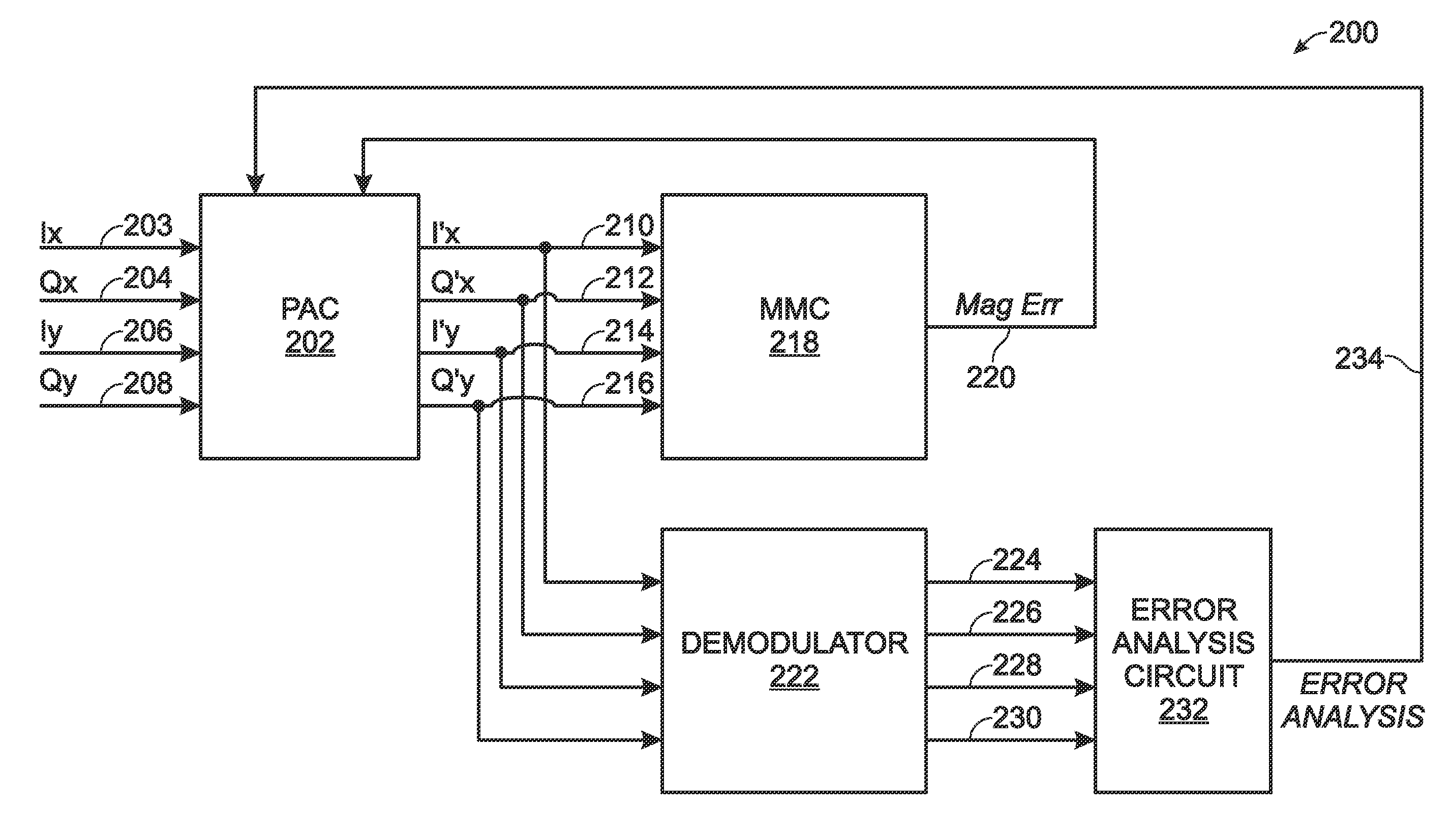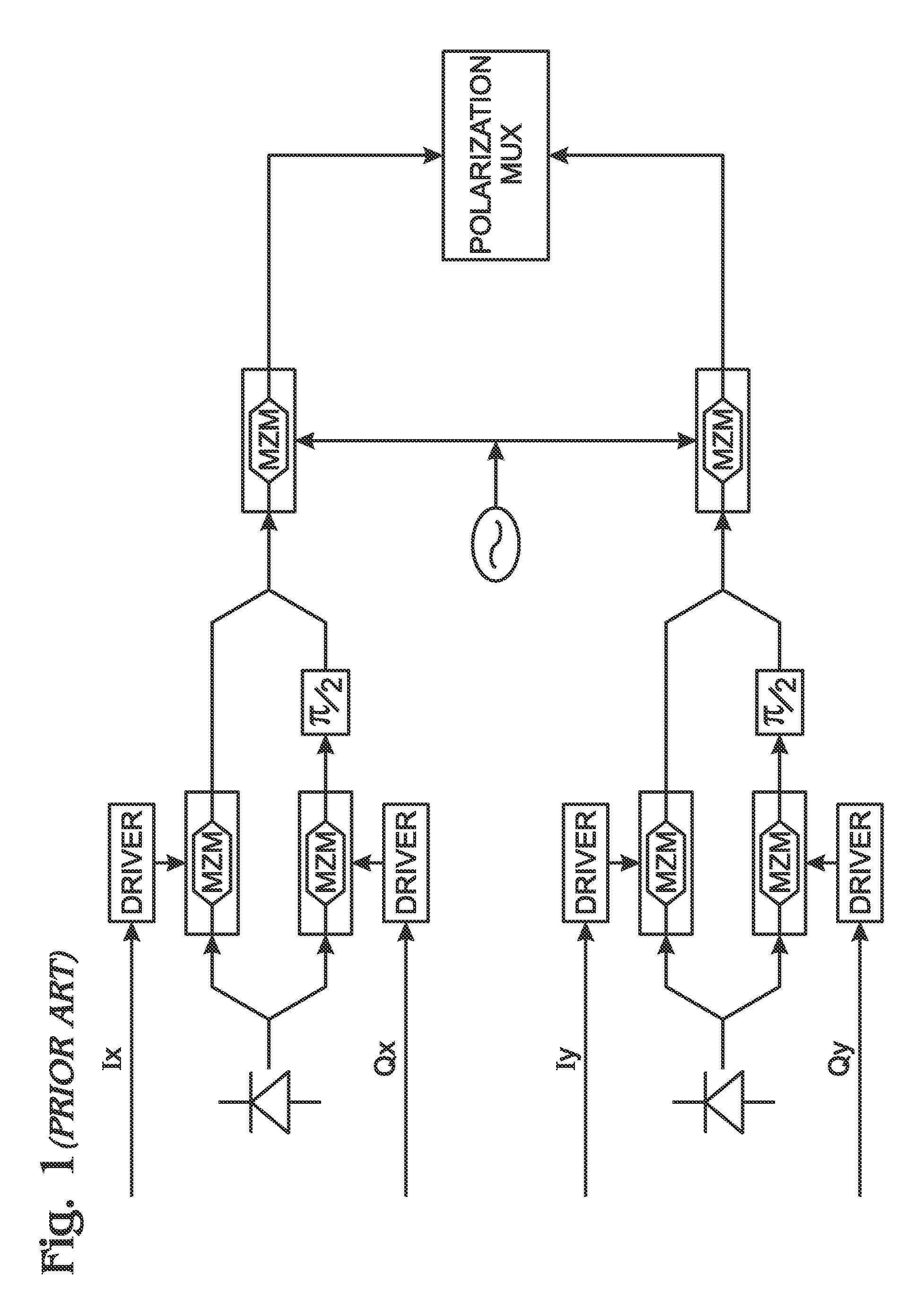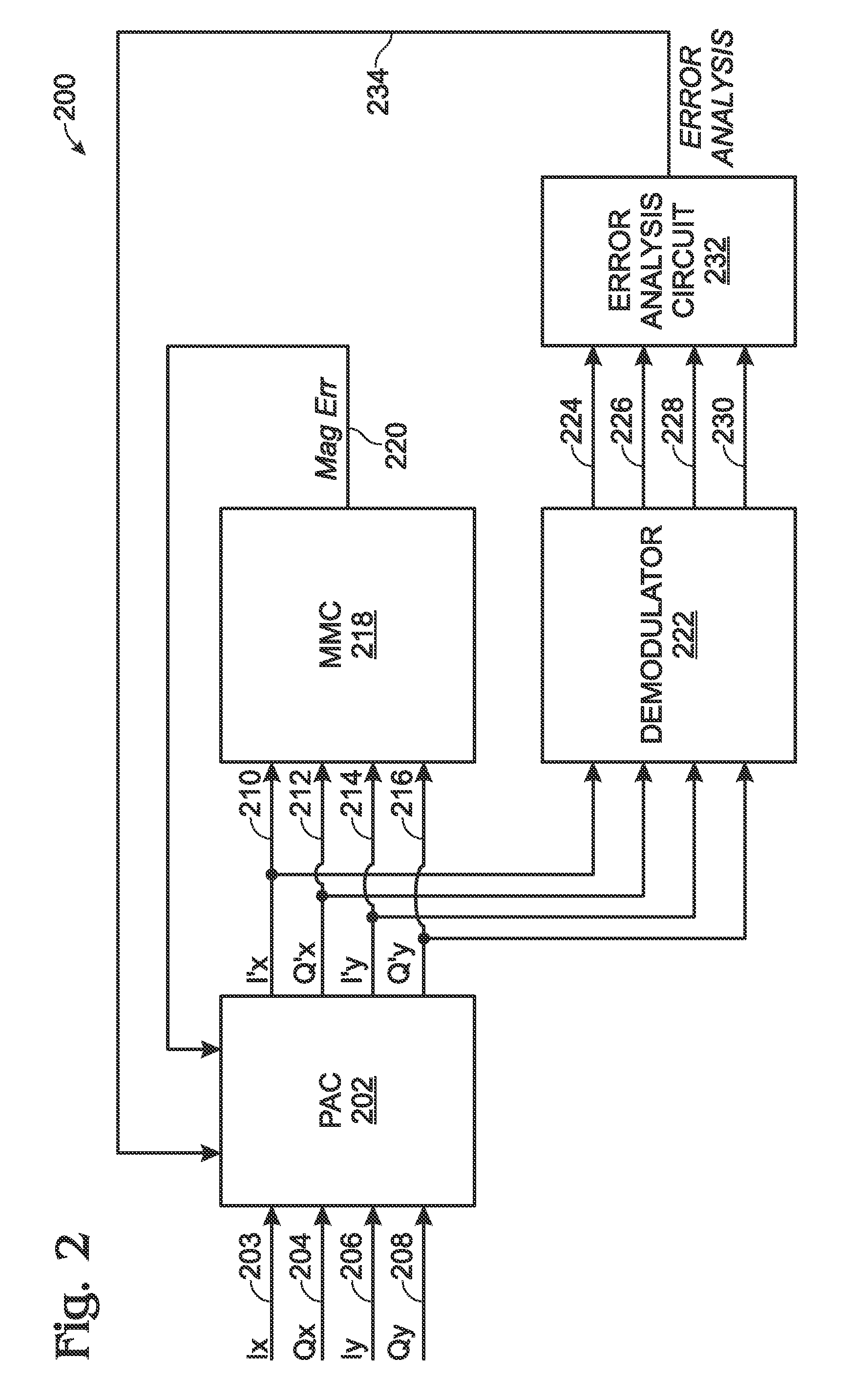Polarization control for multichannel and polarization multiplexed optical transport networks
a multi-channel, optical transport network technology, applied in the field of signal communication, can solve the problems of no longer suitable phase-shift keying (psk), return to zero (rz), non-return to zero (nrz), etc., and achieve the effect of greater utility
- Summary
- Abstract
- Description
- Claims
- Application Information
AI Technical Summary
Benefits of technology
Problems solved by technology
Method used
Image
Examples
example correction
[0032]Assume that the transmission signal is: Ix=1, Qx=1, Iy=1, and Qy=1, or 1 1 1 1. It is also assumed that binary 0 is mapped to −1 in transmission, and 1 is mapped to 1. The constant envelope magnitude is Mx=My=the square root of 2 (sqrt(2))=sqrt(12+12). It is further assumed by in the calculation of the minimum MagErr value, it is determined that Ix=−1, Qx=−1, Iy=1, and Qy=1. With these values, Mx=My=sqrt(2)(radius of constant envelope magnitude). In this case, AGC=sqrt(2) as well. So the PAC circuitry will drive P and N such that Mx=My=AGC. This correction sets the levels of Ix, Qx, Iy, and Qy to the right amplitude value, but with incorrect polarities (for Ix and Qx). That is, any of the following polarities produces the same minimum MagErr, Ix=+ / −1, Iy=+ / −1, Qx=+ / −1, and Qy=+ / −1.
[0033]If FEC is used and received signals are interpreted to be 0 0 1 1 received, a 50% error can be determined, since 1 1 1 1 was actually sent. Using the FEC, the polarity problem is recognized and...
PUM
 Login to View More
Login to View More Abstract
Description
Claims
Application Information
 Login to View More
Login to View More - R&D
- Intellectual Property
- Life Sciences
- Materials
- Tech Scout
- Unparalleled Data Quality
- Higher Quality Content
- 60% Fewer Hallucinations
Browse by: Latest US Patents, China's latest patents, Technical Efficacy Thesaurus, Application Domain, Technology Topic, Popular Technical Reports.
© 2025 PatSnap. All rights reserved.Legal|Privacy policy|Modern Slavery Act Transparency Statement|Sitemap|About US| Contact US: help@patsnap.com



